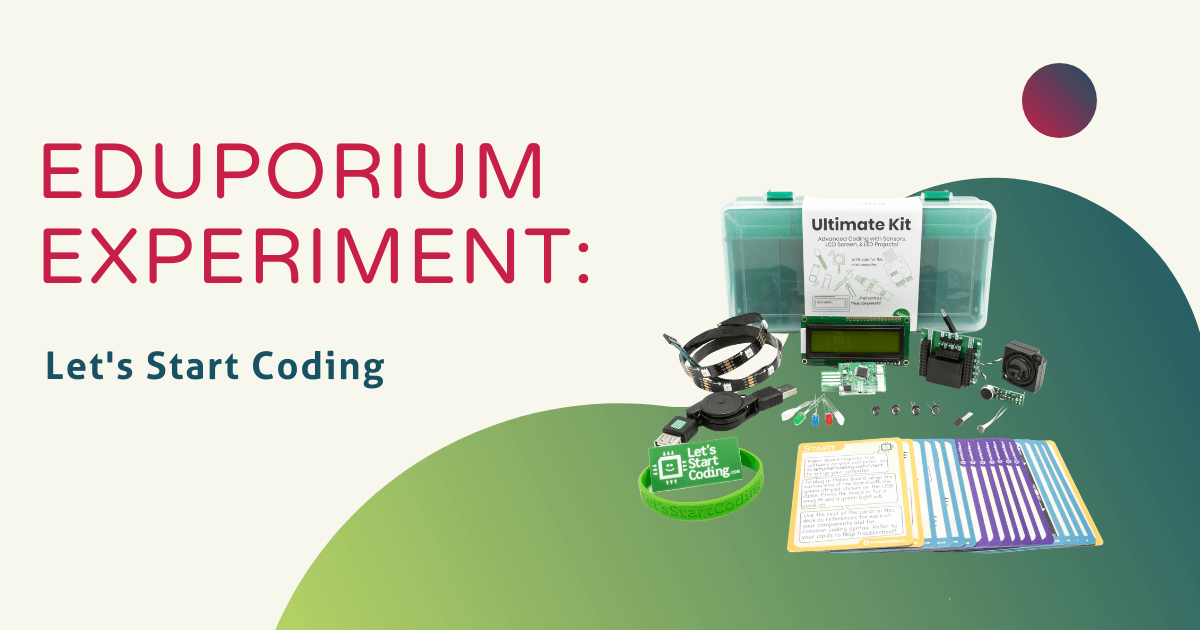Oftentimes, when we look at the best ways to teach students to code, we are presented with one kind of learning module, which requires them to use a computer and work with digital modules to get familiar with coding languages and syntax (i.e. code.org). While this is a great and invaluable tool for teaching coding, there is so much more that kids can do with code—especially when it comes to applying what they know to real-world scenarios! And, the best part is, they can now do it at such a young age! For most kids, this is where the digital divide occurs. They try to take the skills they’ve learned on their computer and make them interact with things outside of their learning modules. How does coding connect to things like electronics, however? It’s a difficult challenge to solve.
Introducing the focus of this week’s Eduporium Experiment: The Let's Start Coding Kits from Kentucky-based STEM company, Let’s Start Coding. Their mission? To tackle these questions we just discussed—teach kids coding and, at the same time, introduce the concept of coding’s real-world impact through fun, engaging learning modules.
These kits are brand new to the Eduporium store, so I was excited to try one out for myself. One of the first things I noticed about it was its cool design—the kit comes in the form of a small toolbox, which unfolds to show designated compartments for all of the kit’s components. It comes with cards that go over setup instructions, explain the contents of the kit, and basic programming lingo (like while loop, output, and analogREAD). The Getting Started card directed me to the Let’s Start Coding website, where I was walked through a very simple setup process and immediately got to sync up my first program with the Maker Board (the heart of the whole kit)!
Upon further examination of the Let’s Start Coding website, I quickly realized that this company has gone above and beyond to provide comprehensive, fun, and educational learning modules, lessons, and projects for programmers of every level. I explored some of the lessons myself, starting off simple with coding an LED to blink, and quickly moving on to make my own piano on my small Maker Board. The nice thing about these modules? They come with the code already written and help walk users through how it works with video tutorials and comments in the code itself. The idea is that once kids understand how the code is supposed to work, they can start playing with it to modify how it performs. And, if they break it? No big deal. Just reset to the default and start again.
I think this kit is a great bridge between coding on a computer screen and seeing real-world examples of how code can leap from that screen and be used to control a real object. When using the Let's Start Coding Kits, kids get to work with real electrical components and making their code run through the Maker Board really helps them feel like they are accomplishing something very cool and very meaningful.
The activities are clear and concise and, with the quizzes at the end of each lesson, kids leave with a very firm grasp of all the topics they just went over, so they can then apply them to more complicated projects later on. This kit would make a great addition to a beginner-level computer science curriculum, and I definitely think there’s also cross-discipline compatibility with most other subjects taught in elementary schools—it just comes down to which project kids want to construct first!
If you have a product you’d like to see featured in the Eduporium Experiment, let us know by sending us a message on Twitter or Facebook! Look out for the next edition as well, featuring the Cubetto Robot.



